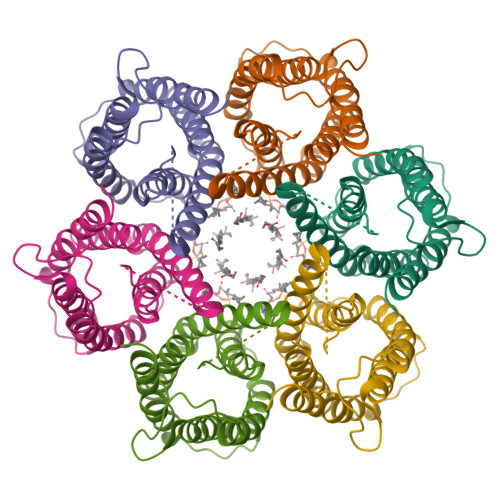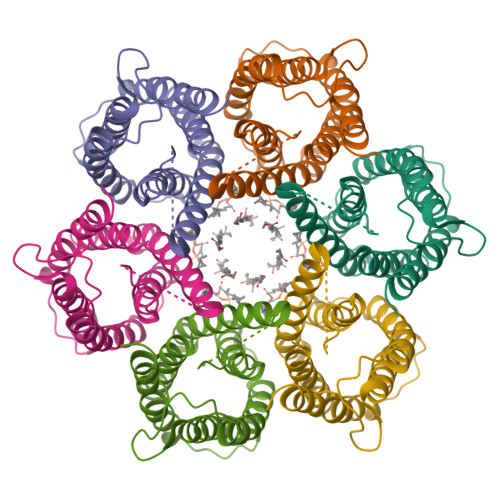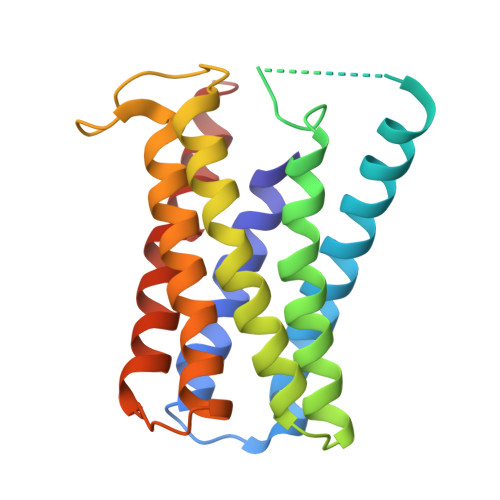pH-dependent gating mechanism of theHelicobacter pyloriurea channel revealed by cryo-EM.
Cui, Y., Zhou, K., Strugatsky, D., Wen, Y., Sachs, G., Zhou, Z.H., Munson, K.(2019) Sci Adv 5: eaav8423-eaav8423
- PubMed: 30906870
- DOI: https://doi.org/10.1126/sciadv.aav8423
- Primary Citation of Related Structures:
6NSJ, 6NSK - PubMed Abstract:
The urea channel of Helicobacter pylori ( Hp UreI) is an ideal drug target for preventing gastric cancer but incomplete understanding of its gating mechanism has hampered development of inhibitors for the eradication of H. pylori . Here, we present the cryo-EM structures of Hp UreI in closed and open conformations, both at a resolution of 2.7 Å. Our hexameric structures of this small membrane protein (~21 kDa/protomer) resolve its periplasmic loops and carboxyl terminus that close and open the channel, and define a gating mechanism that is pH dependent and requires cooperativity between protomers in the hexamer. Gating is further associated with well-resolved changes in the channel-lining residues that modify the shape and length of the urea pore. Site-specific mutations in the periplasmic domain and urea pore identified key residues important for channel function. Drugs blocking the urea pore based on our structures should lead to a new strategy for H. pylori eradication.
Organizational Affiliation:
California NanoSystems Institute, University California Los Angeles, Los Angeles, CA 90095, USA.



















